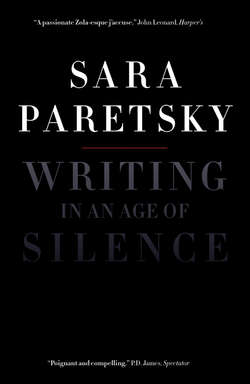Читать книгу Writing in an Age of Silence - Sara Paretsky - Страница 9
Notes
Оглавление1 For the interested reader, my older brother became a Dominican priest. He taught in Rome for many years but currently works in New York. Daniel, two years younger than I, is a veterinarian in northern Wisconsin. Jonathan, nine years younger, is a Kansas lawyer, a magician, an astronomer. He and Nicholas, the youngest, used to play table tennis together in a room in our basement that had once been a hiding place on the Underground Railroad. Nicholas recently completed a PhD in sociology, with a brilliant, beautifully written thesis on the way in which multi-nationals affect government economic policy.
2 Her dedication to books and children’s literacy led the library to name the children’s reading room for her. The day of her funeral, they had to close the library, since all of her co-workers needed to say farewell to her.
3 Martineau was writing of South Carolina senator John C. Calhoun, who was the south’s leading apologist for slavery. It’s the image of my own life, not the subject of his work, that I find applicable. Calhoun rightly pointed out the economic benefits the north reaped from slavery, which made them reluctant to seek its overthrow.
4 A portion of “Wild Women Out of Control” was published in Family Portraits, Doubleday & Col, 1985.
5 First Wave Feminism is usually thought to have started with the Seneca Falls Convention of 1848, in which women first formally came together to demand suffrage and an end to their legal and economic subjugation, and ended with the 19th Amendment to the US Constitution, which granted women suffrage in 1920. Second Wave Feminism doesn’t have such a definable beginning point. Just as First Wave Feminism grew out of women’s involvement in Abolition, the Second Wave grew out of women’s involvement in the Civil Rights movement.
6 Cited, inter alia, in the Washington Post, October 31, 2006.
